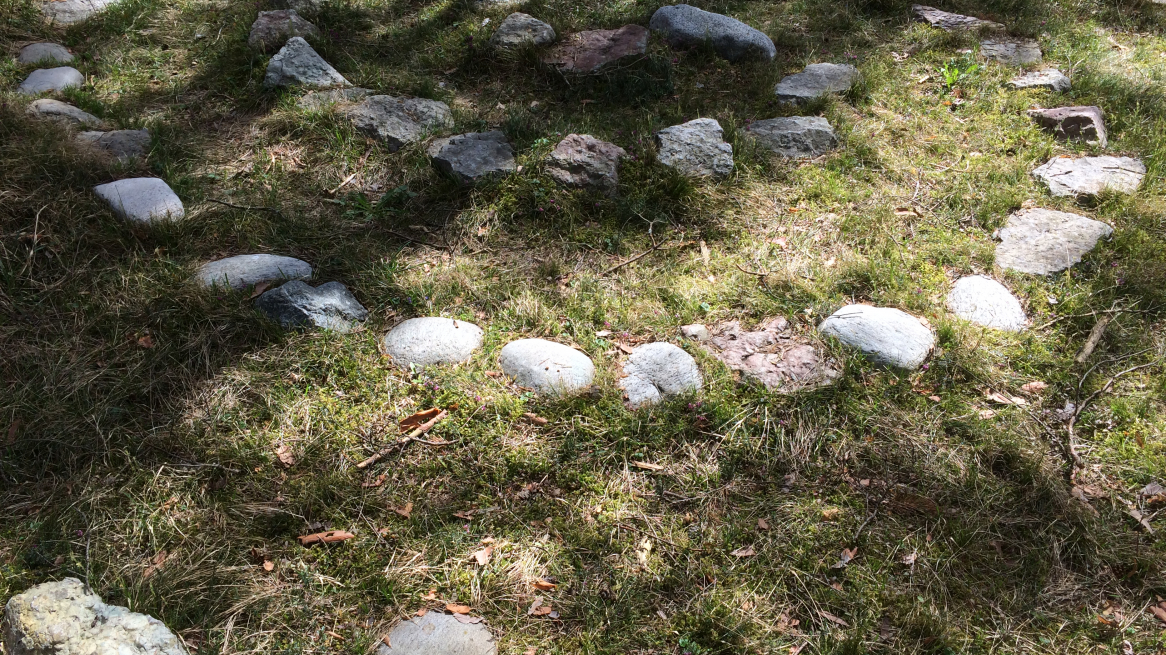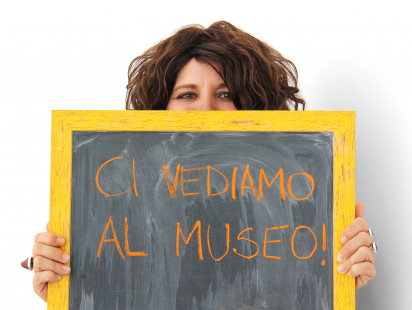
The 'Path of the Senses' from Rietz via Stams to Mötz-Locherboden is an exploration in the heart of Tyrol - particularly recommended in late spring or early summer. In other words, when nature in the Middle Upper Inn Valley is at its most beautiful. The large number of churches alone, including well-known pilgrimage churches, chapels and shrines, indicate that people have regarded this part of Tyrol as a mystical region since time immemorial. A fact that is backed up by recent archaeological finds.
You don't have to be a devout believer to pay a visit to the pilgrimage churches and chapels along the way for their beauty. And you don't have to be a long-distance hiker to easily cover the almost twelve kilometers in one day. As I played a key role in the development of the 'Path of the Senses' project around 20 years ago, I would like to take this opportunity to offer my readers some suggestions for an extraordinary hike, which is best started in Rietz. (Here is the link to the map)
My first tip: travel by public transport. Why? If you use public transport, you don't have to return to the starting point of the hike, i.e. your car. The 'ideal' start in this case is in Rietz and ends in Stams, very close to the train station.
Rietz, the place of three churches
The Rietz parish church is one of those places you know from the train and highway but have never visited. This is where the circular walk starts. The church is truly ancient: its foundation dates back to the 5th century. I am sure that it is located on a former Roman road that ran here - coming from Stams - in the direction of Pfaffenhofen. Pfaffenhofen, in turn, was a Roman bridgehead in the truest sense of the word: in Roman times, people coming from Wilten - or from the Oberland - crossed the Inn here in the direction of the Via Claudia Augusta, which led over the Fernpass.
It is very rare for a tree to literally 'catch' a stone and make it its own - as here on the path from the Rietz parish church to the pilgrimage church of St. Anthony.
A path then leads from the Rietz parish church to the well-known pilgrimage church in honor of St. Anthony St. Anthonywhich towers like a castle above Rietz. The view of the Inn Valley is wonderful. Here, on the former 'Scheibenbühel', it was given its baroque design in 1757 and a large Calvary invites religious people to reflect. The third church in Rietz is the Church of the Holy Cross in the lower village. The Kluibenschedl House near the municipal office is worth a visit in Rietz. It is the home and birthplace of Tyrol's most famous Nazarene painter, Heinrich Kluibenschedl.
The house where Heinrich Kluibenschedl lived and was born in Rietz. He was a famous painter of the so-called Nazarene style.
The subsequent path to Stams can be covered in two ways: either on the paved connecting path, on which the well-signposted Way of St. James runs, or on the 'original' path, which turns uphill in Haslach and leads to Stams on a beautiful, presumably ancient path.
The 'Path of the Senses' in Stams runs along the ancient route, which probably dates back to the Iron Age.
Why do I assume that this path is ancient? Because it leads past a mystical and historical place. The 'Hexenbödele' still exudes a kind of magic that is rooted in prehistory. Because barely a kilometer further along the path, Prof. Tomedi from the University of Innsbruck began excavations at the so-called 'Glasbergl' on my initiative in 2004. The remains of a Rhaetian settlement including a sacrificial site were found here, which was destroyed by the Romans during their invasion in 15 AD. The settlement was probably founded around 600 BC. The 'Hexenbödele' is therefore likely to have been a place of the 'old religion', which Christianity then tried to portray as 'bewitched'.
The 'Hexenbödele' above Stams. Once most likely a pre-Christian cult site, today a mystical place that is particularly popular with children.
Excavations at the 'Glasbergl' not only unearthed the remains of Rhaetian houses, but also a former place of worship.
I don't need to emphasize that Stams Abbey is one of the pearls on the 'Path of the Senses'. As it was the burial place of the Tyrolean rulers, this Tyrolean institution was built and furnished accordingly. The Website of the monastery provides a wealth of information. It should come as no surprise that Stams is the location of the famous ski school: Educational outreach was and is an important task for the Cistercian order.
However, I would also like to present some lesser-known facts about Stams at this point. Namely the Parish church of St. John the Baptist. For centuries, it was the destination of thousands, if not hundreds of thousands of pilgrims. The reason: a relic allegedly from John the Baptist was presented here, namely a finger. But it is not just any finger: legend has it that it is the finger with which John pointed to Jesus during his lifetime. I have written more about this in my Blog on the Tyrolean Way of St. James for more information.
From Stams, the path leads to the Stams oak forestthe oldest natural monument in Tyrol. Here, knowledgeable hikers can get an idea of what the forests in Tyrol once looked like. A variety of tree and plant species are presented here as part of a nature trail. And from the oak forest, the trail then heads towards Mötzer Innbrücke.
Emperors and kings once passed through Mötz
Mötz is one of those inconspicuous places that were of great importance in terms of transportation a few centuries ago. In the 18th century, larch wood was still being rafted downstream from here. The Mötzer 'Flössergasse' is a reminder of the old days. There was also a bridge over the Inn here, which was once used by emperors and kings when they wanted to travel to or from Italy. Klamm Castle above Mötz was once the resting place of high lords. Here, too, it is the name of a lane that unspectacularly reflects the 'old days': Through today's 'Königsgasse'which turns into the country road at Mötz church, was once used to travel from Klamm Castle to the bridge and on to Stams or towards Italy.
They came through this lane: emperors and kings who set out from Klamm Castle to cross the Inn in Mötz. Or those coming from the south and heading north.
From the Mötz parish church, the 'Path of the Senses' then leads to the hill on which the Pilgrimage church of Maria Locherboden rises from afar. Halfway up the church, hikers pass a stone spiral that invites you to walk through it from the outside to the inside. Such spirals are ancient symbols of the winding paths that we humans have to travel throughout our lives.
The fact that Locherboden has become a place of pilgrimage goes back to a 'miraculous healing'. On September 11, 1871, the terminally ill Maria Kalb traveled to Mötz with relatives. The following day, the woman - who was barely showing any signs of life - was carried to the grotto below the church and laid on two pillows. After praying a rosary, she told them about an apparition of the Virgin Mary, got up and prayed with her relatives. She was then able to descend to Mötz herself. The place where, according to the sick woman, Our Lady appeared to her is still visible today.
The church itself is built on an ancient place of worship. The discovery of a Bronze Age ceremonial knife indicates this, as do the prehistoric settlement remains that have been found here. If you have particularly good eyes, you can sometimes find prehistoric pottery remains on the square below the pilgrimage church, which are pushed to the surface by moles in winter. In any case, I already have a whole collection of them.
For the inquisitive: animals and plants are introduced along the way to Stams
The descent from Locherboden to Stams leads along a sometimes narrow hiking trail on which good footwear is recommended. Numerous information boards introduce this south-facing, nut-dry area, present the animals that live here and give an overview of the flora. At the end of this trail, one last little adventure awaits the sensory hikers: the Stamser suspension bridge. It is 107 meters long and was built in 1933.
From the suspension bridge in Stams to the train station it is still around 400 meters.
DATA ON THE HIKE:
Length: approx. 12 km; time required: around 6 hours. Hiking boots with a good profile are highly recommended.
You can find the trail map here
My suggestion for ARRIVAL: either by train or by bus (bus stop Rietz-Kapelle). DEPARTURE from Stams either by train or bus (bus stop Stams-Abzweigung Bahnhof).
Further information:
My colleague Danijel Jovanovic has created a wonderful photo blog about Maria Locherboden.
My colleague Susanne Gurschler has compiled lots of interesting facts about Stams Abbey in her blog post.
Images, unless otherwise indicated: © Werner Kräutler
Rate this article
Show me the location on the map
A volunteer at the "Schule der Alm" alpine farming school, cultural pilgrim, Tyrol aficionado and Innsbruck fan.
Similar articles
Innsbruck is a popular tourist destination. The big attraction remains the mountains, but the city has a…
Not just looking at art, but getting to know it better on a guided tour, talking about…
The museum in Innsbruck's Arsenal "Museum im Zeughaus" was reopened on April 6,…
The Ferdinandeum regional museum is open until June 30, 2024, with exhibitions and events. Then a…
























